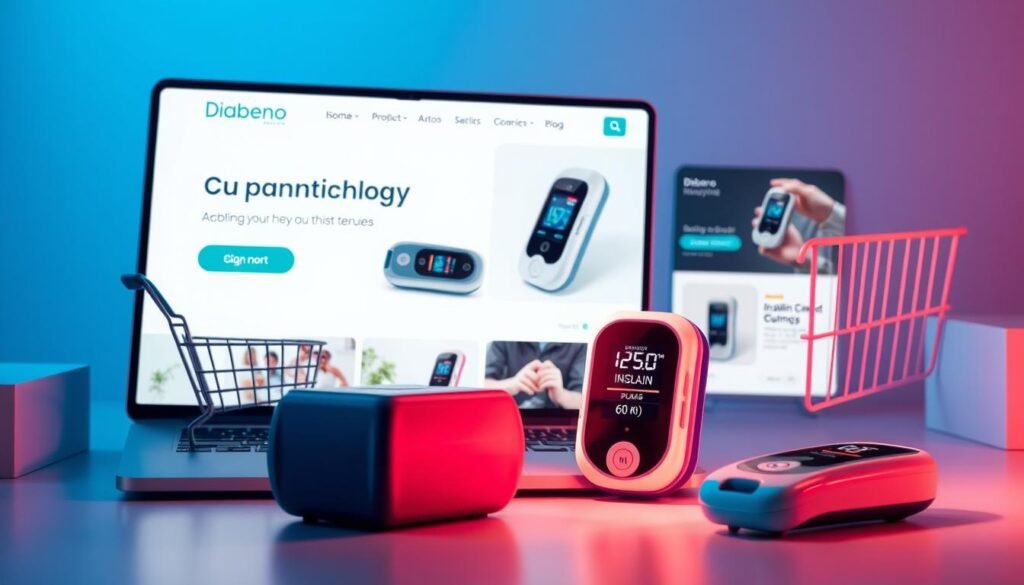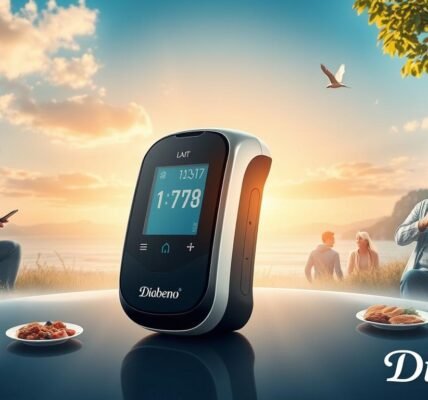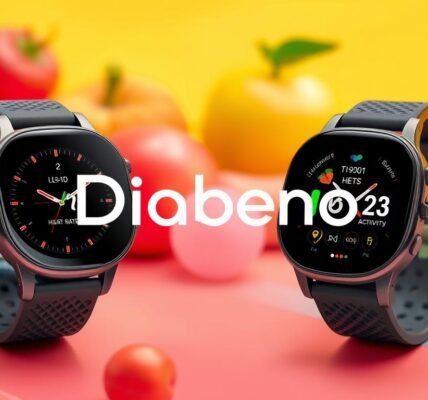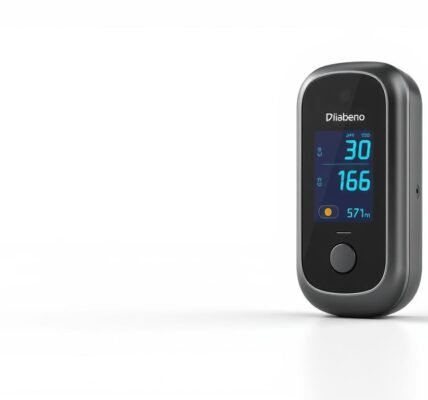Managing diabetes can feel like a financial maze, especially with insulin pumps. It’s key to know the costs and insurance coverage for these pumps. The price of insulin in the U.S. has skyrocketed from $8 billion in 2012 to $22.3 billion in 20221.
Insulin pumps are small but offer advanced features like remote control and insulin suggestions based on blood sugar readings2. While many insurance companies cover these devices, the financial commitment can be overwhelming1. Let’s explore the costs, insurance, and financial help available for managing diabetes!
Key Takeaways
- Understanding the costs related to insulin pumps is crucial for effective diabetes management.
- Many insurance companies provide coverage for insulin pumps, but policies vary.
- Out-of-pocket spending on diabetes management has seen a significant increase.
- Insulin pumps offer features that can assist in managing blood sugar levels.
- Financial aid programs and legislative actions may help alleviate insulin costs.
- Being informed about both initial costs and ongoing expenses is important.
Understanding Insulin Pumps
An insulin pump is a device that gives insulin all day to manage diabetes. It helps keep blood sugar levels stable, unlike injections. It has two ways to give insulin: a steady rate and a bigger dose before meals.
Using an insulin pump can make your life easier. It lets you eat and move more freely. It’s great for those who are active or have low blood sugar often3. The pump works with a glucose monitor to track sugar levels and manage insulin better3.
Insulin pumps have many benefits, but they need you to learn how to use them. You’ll need to check your blood sugar often and understand the pump’s features. Some people switch between pumps and injections, while others use pumps all the time3.
Choosing an insulin pump involves considering size, features, and support from the maker. Pumps can be pricey, with costs in the thousands, and insurance coverage varies4. Talk to your doctor to find the right pump for you and get the training you need and ensure proper training.
Insulin pumps are a big step forward in managing diabetes. It’s key to know the risks, like ketoacidosis or infection. Insulin pumps can improve your life and diabetes control, no matter your age or health5.
Types of Insulin Pumps
When looking at insulin pumps, you’ll find different types of insulin pumps for various needs. There are tubed and tubeless pumps. Tubed pumps use tubing to connect to a skin infusion set. They need reservoir and infusion set changes every 2-3 days for steady insulin delivery6.
Tubeless pumps, like the Omnipod, stick to your skin and need filling before use. They’re great for hiding under clothes6.
Knowing the insulin pump types available is key. Top models, like Medtronic MiniMed™ or Tandem® t:slim, offer advanced features. These include continuous glucose monitoring or automated insulin delivery. They help manage blood sugar better and offer precise dosing7.
Insulin pumps have many benefits, like less risk of low blood sugar. But, they can also cause problems like skin infections or tech issues7. Choosing the right pump depends on your needs, how you like to handle devices, and your diabetes goals. You might prefer the advanced features of a tubed system or the ease of a tubeless pump7.

Average Insulin Pumps Cost
In the United States, insulin pumps can cost up to $6,500. This price varies based on the brand, model, and features. It’s key to know the cost range for budgeting8. Supplies like batteries and cartridges add $2,000 to $3,000 yearly8.
Insulin infusion pumps usually cost about $4,500. The yearly supplies can be over $1,5009.
Prices for insulin pumps change due to insurance and treatment plans. Most insurance covers 80% to 90% of CSII costs9. But, those with high deductibles might pay a lot, making it crucial to check coverage8.
Pump reservoirs hold 176 to 315 units of insulin. Larger reservoirs are better for adults8. If you can’t afford a pump, many organizations offer financial help8.
Insulin Pumps Cost Breakdown
It’s important to know the costs of insulin pumps before you decide. The costs include a one-time purchase and monthly expenses. These can affect your budget a lot.
Initial Purchase Cost
The cost of an insulin pump varies a lot. Prices change based on the model and brand. You might pay between $4,500 and $7,000 at first.
Medicare plans to lower costs for syringe insulin to $35 a month. But, pump users might pay more10. It’s key to think about these differences when deciding on a pump.
Monthly Expenses and Supplies
Monthly costs for insulin pumps are a big part of the total cost. For example, you might pay $54.26 a month for pump supplies. This is more than 50% higher than syringe insulin costs10.
Things like infusion sets and reservoirs can add up. The total monthly cost can be over $450, based on how much you use and your prescriptions11. Keeping track of these costs is crucial for managing your diabetes financially.

Factors Influencing Insulin Pump Pricing
It’s important to know what affects insulin pump prices. Many things can change how much an insulin pump costs. Knowing these factors can help you make better choices.
Brand and Technology
The brand and technology of insulin pumps can greatly affect their price. High-end brands often have more features that help control blood sugar. For some, insulin pumps work better than shots for managing blood sugar12.
But, these advanced features can also make pumps more expensive. This adds to the overall cost.
Insurance Coverage
Insurance coverage is key in figuring out what you’ll pay. Some plans cover insulin pumps fully or partially. Others might have strict rules that increase costs.
It’s crucial to know what your insurance covers. This can affect how well you stick to your treatment plan, especially for those on a tight budget13.
Check out this article for more on how insurance affects medication costs: https://pmc.ncbi.nlm.nih.gov/articles/PMC8597930/.
Geographical Location
Where you live can also change insulin pump prices. Prices can differ a lot between cities and rural areas. This is because of different availability and pricing in each place.
Local market conditions can also affect prices. Knowing this can help you prepare for any price differences when buying.
Insurance Coverage for Insulin Pumps
Understanding insurance coverage for insulin pumps is key for those who rely on them. Insulin pump insurance usually falls under durable medical equipment coverage. This decides how much financial help different health plans offer.
Your coverage depends on your insurance provider’s rules. Many plans need prior approval and proof that you really need the pump. Sometimes, you might need to use a simpler pump first14.
Coverage can change a lot, including costs for pumps and supplies like reservoirs and infusion sets. Some plans limit test strips you can get in a certain time14. You might also get financial help from some medication makers to cover co-pays15.
Programs like the New Brunswick Insulin Pump Program help with pump and monitoring costs. This program helps only after you’ve tried all other insurance options15.
In states like Washington, insurance plans must cover diabetes services, including pumps and accessories. But, they can still charge you for part of the cost16. Always check your insurance plan’s diabetes management rules to make smart choices about your health.

Medicare and Insulin Pumps
It’s important to know how Medicare helps with insulin pump therapy for diabetes. Medicare has different plans, like Medicare Part B and Medicare Part D. Each plan offers different benefits based on your needs.
Overview of Coverage
Medicare Part B covers insulin if you need it for an insulin pump. This makes sure you get the tools you need to manage your diabetes1718. Part B also covers diabetes screenings and training to help you manage your condition17.
For insulin pump users, Medicare caps the cost of insulin at $35 a month. This is a big help for your wallet1819.
Part B vs Part D Coverage
Medicare Part D covers prescription insulin and supplies. This includes injectable insulins not used with pumps and medical supplies like syringes1819. The Inflation Reduction Act limits the cost of insulin to $35 a month for both Part B and Part D. This makes insulin more affordable for those with diabetes1719.
Medicaid and Insulin Pump Assistance
Medicaid helps people with diabetes by covering the costs of insulin pumps and other supplies. Each state has its own rules for who can get these benefits. It’s important to know what your state offers.
When looking for Medicaid help with insulin pumps, consider your income, age, and health. Each state lists diabetic supplies differently. This can help you get the most from these programs20.
Some states have limits on how much you can get of these supplies. You might need extra approval for more. So, it’s key to understand your state’s rules to get the most benefits.
In some cases, Medicaid might only ask you to pay a little for prescriptions, like insulin. The most you might pay is $8 per prescription2120. Make sure to check which supplies and medications are covered and if there are any costs.
Using local resources can make getting Medicaid help easier. Contact health agencies or groups to learn about what’s available in your state. This can help reduce the cost of managing diabetes.

Cost-effective Insulin Pump Options
Finding affordable insulin pumps is key for managing diabetes without spending too much. Many models are both cheap and functional. Knowing these options can help those looking for budget-friendly pumps.
Affordable Insulin Pumps
Models like the Medtronic MiniMed 770G System and the t:slim X2 insulin pump meet various needs. The MiniMed 770G is for kids aged 2 and up. It adjusts insulin every 5 minutes to match glucose levels22.
The t:slim X2 is for those 6 and older. It’s slim and works with CGMs for easy diabetes management22.
Cheapest Insulin Pump Models
The Omnipod Dash is a top pick for the cheapest prices. It’s easy to use and connects to phones for alerts22. The Dana Diabecare IIS is also budget-friendly. It’s portable and has preset meal boluses for on-the-go users22.
Before buying, check if makers like Insulet offer free trials. This lets you try different pumps to find the best one for you23.
Buying Insulin Pumps Online
Buying insulin pumps online is easy and convenient. You can look at different models and prices from home. This makes finding the right insulin pump less stressful. Choose trusted online stores that sell diabetic supplies.

When you buy online, make sure the seller is licensed and has good customer service. Check out customer reviews to see if the service and products are reliable. Also, see if they have a clear return policy if you’re not happy with the pump.
Online shopping can save you money. Online stores often have better prices than physical stores because they have lower costs. You might find special deals, discounts for buying in bulk, or payment plans that help you save. By comparing prices, you can find a good deal that fits your budget and health needs.
Talking to online forums or support groups can also help. People there share their experiences and tips. They can warn you about any issues with certain retailers. These groups can guide you when you’re choosing an insulin pump online.
Research shows most people are happy with their online insulin pump purchases. This confirms the benefits of buying online.
Financing Options for Insulin Pumps
Dealing with the costs of insulin pumps can be tough. But, there are many ways to make it easier. Knowing about these options can help you choose the best for your diabetes care.
Payment Plans
Many places offer payment plans for insulin pumps. This can make the start-up costs lower. For example, Peloton lets you start with a small down payment, helping you spread out the cost.
Also, the monthly cost for an insulin pump is about $50. This includes service fees, making it easier to manage. You don’t have to pay everything upfront, which helps a lot26.
Manufacturer Assistance Programs
Many makers of insulin pumps have programs to help with costs. The Omnipod Financial Assistance Program helps those who need it most27. Companies like Medtronic and Tandem also offer support and training, which can reduce costs.
You can find payment plans that fit your insurance and budget. This makes it easier to get the diabetes tools you need here28.
Insulin Pump Cost Comparison
Understanding insulin pump prices is key to managing diabetes. A detailed comparison helps you choose wisely. For example, prices for popular models vary a lot. The Medtronic 780G costs $7,400, while the Omnipod Dash is $6,300 plus $30 per pod. The Tandem Control IQ is $7,000, and the Ypsomed is $6,40029.
Annual costs are also important. The Medtronic 780G costs $3,350 a year, and the Tandem Control IQ is $3,00029.
When looking at prices, think about warranties and battery life too. Medtronic and Tandem offer 4-year warranties, while Omnipod and Ypsomed give 5-year warranties29. Battery life varies, with some pumps using rechargeable batteries29.
Functionality matters too. The Omnipod 5 holds 200 units of insulin, while the Tandem Control IQ and Beta Bionics iLet hold 300 units25. Each system has unique features that affect your experience. Medtronic offers a Flex payment plan for easier payments25.

Potential Cost Savings with Insulin Pumps
Switching to an insulin pump can save a lot of money compared to traditional diabetes management. Studies show that using a continuous subcutaneous insulin infusion device can cut down therapy costs. For example, Medicare Part B users might only pay $35 a month for insulin, which is a big savings21.
Insulin pump users also have fewer health problems, which means fewer hospital visits. This can lead to more savings, not just from medication but also from avoiding expensive emergency care. Medicare deductibles for 2024 show how affordable insulin pumps can be, with a $240 deductible for Part B and a maximum of $545 for Part D21.
A study found that insulin pump users spent $8,272 over 28 weeks, while those with multiple daily injections spent $5,623. The difference of $2,644 might seem big, but it leads to a better quality of life and better blood sugar control11.
Choosing insulin pumps can be very cost-effective in the long run. It helps keep blood sugar levels stable and improves patient well-being cost-effective diabetes management. Making smart choices about insulin delivery can lead to healthier outcomes and less financial stress in the future.
| Benefit | Description |
|---|---|
| Reduced Insulin Costs | Cap of $35 per month for Medicare recipients using pumps |
| Fewer Hospital Visits | Lower risk of complications associated with improved management |
| Quality of Life Improvements | Enhanced management leads to better overall well-being |
| Lower Daily Medication Costs | Consistent insurance coverage and potential co-pay assistance |
| Long-term Economic Benefits | Decreased total healthcare costs with effective glucose control |
Getting Help with Insurance Issues
Understanding your insurance can be tough, especially for medical devices like insulin pumps. Getting insurance help for insulin pumps means dealing with complex policies and talking directly to manufacturers. Knowing where to get help can make things easier.
Contacting the Manufacturer
Talking directly to the manufacturer is a great way to solve insurance problems. Companies like Abbott, Dexcom, and Medtronic have support programs to help with costs. For example, Abbott’s MyFreeStyle program offers free sensors and readers for those with commercial insurance30.
Medtronic also helps by offering free sensors or payment deferrals for those who lost their insurance30.
Applying for Exceptions
If insurance doesn’t cover your insulin pump, you can apply for exceptions. Many plans allow coverage for critical equipment if it’s medically necessary. You’ll need to gather medical records and treatment plans to apply.
The open enrollment for health insurance starts on November 1, 2023, and ends on January 15, 2024. This is a good time to change your plan31. You can also get help from navigators or community groups to make sure your application is complete.

| Manufacturer | Program | Cost | Eligibility |
|---|---|---|---|
| Abbott | MyFreeStyle | 1 free sensor and reader; $75 for 2 sensors; $65 for reader | Commercial insurance holders |
| Dexcom | Pharmacy savings program | $200 savings or more | Individuals without CGM coverage |
| Medtronic | Financial assistance | Up to 3 months of free sensors | Individuals who lost their insurance |
Understanding Lifelong Costs of Insulin Pump Therapy
Managing diabetes with an insulin pump is more than just buying one. You must think about the costs for supplies, upkeep, and future upgrades. Budgeting for these costs is key to managing your diabetes over time.
Studies show insulin pumps can greatly improve your life quality. Even though they cost a lot upfront, they offer big health benefits in the long run32. For example, the MiniMed 670G HCL system can improve your life expectancy but also increases costs. This shows the choices you make about insulin pumps have trade-offs33.
It’s important to keep track of the costs for supplies and when you might need a new device. Regular checks help you make smart choices and adjust your budget. Talking to your healthcare provider can also help save money over time.
| Cost Component | Estimate ($) | Frequency |
|---|---|---|
| Initial Pump Purchase | 5,000 | One-time |
| Monthly Supply Costs | 350 | Monthly |
| Annual Maintenance | 500 | Yearly |
| Potential Upgrades | 2,500 | Every 4 years |
Knowing these costs helps you manage your ongoing insulin pump expenses well. This way, you can keep your diabetes care at its best for your whole life.
Insulin Pump Affordability Across Different Insurance Plans
The cost of insulin pumps varies with your insurance plan. It’s key to know the differences. Insurance plans group insulin into tiers, affecting your costs. Lower tiers have generic or preferred meds, saving you money. Higher tiers have pricier brand-name or specialty drugs14.
Medicare now caps monthly insulin costs at $3519. But, not all plans follow this rule. Some plans have their own rules for insulin pump coverage. You might need to prove you really need it, which can change how much you pay14.
Insurance plans can also add extra costs. Some limit how many test strips you can get. This can make it hard to keep track of your health. When looking at plans, remember how they affect insulin pump costs14.
Using patient assistance programs can help. These programs can cover co-pays and other costs. This makes insulin pump therapy more affordable14. It’s important to compare insurance plans to find the best deal on insulin pump coverage.

Conclusion
Looking into the costs of insulin pumps and their insurance coverage, we find some important points. Using insulin pumps can cut down insulin use by about 12.8 units. This is compared to taking insulin shots many times a day. Also, the cost for using both insulin pumps and continuous glucose monitoring is $8,272 over 28 weeks for one person11.
Insurance is key in making insulin pumps affordable. It usually covers 80% to 90% of the costs. This makes it easier for people to get these devices, helping them manage their diabetes better. Knowing about insulin pump insurance helps you make better choices.
When thinking about managing your diabetes, remember these points about insulin pump costs. With new technology and studies showing cost-effectiveness, insulin pumps can improve your life and health932. So, it’s important to do your research and understand both the costs and benefits for better diabetes care.
FAQ
What is the average cost of an insulin pump?
Are insulin pumps covered by insurance?
What factors affect the overall cost of insulin pumps?
How do I determine if my insurance covers an insulin pump?
Can I buy insulin pumps online, and what should I look for?
Are there affordable insulin pump options available?
What financing options are available for purchasing an insulin pump?
How can I save money on insulin pump therapy?
How do Medicare and Medicaid provide coverage for insulin pumps?
What should I do if I encounter insurance-related challenges regarding my insulin pump?
Source Links
- https://www.businessinsider.com/insulin-price-cap-costs-diabetes-supplies-pump-monitor-tiktok-2024-2
- https://www.cigna.com/knowledge-center/hw/medical-topics/diabetes-zx1815
- https://diabetes.org/about-diabetes/devices-technology/insulin-pumps-relief-and-choice
- https://dtc.ucsf.edu/types-of-diabetes/type1/treatment-of-type-1-diabetes/medications-and-therapies/type-1-insulin-pump-therapy/pump-faqs/
- https://www.diabetes.org.uk/about-diabetes/looking-after-diabetes/treatments/insulin/insulin-pumps
- https://my.clevelandclinic.org/health/articles/insulin-pumps
- https://gluroo.com/blog/diabetes-101/all-about-insulin-pumps/
- https://www.webmd.com/diabetes/insulin-pump
- https://www.ajmc.com/view/comparative-effectiveness-and-costs-of-insulin-pump-therapy-for-diabetes
- https://pmc.ncbi.nlm.nih.gov/articles/PMC8411473/
- https://pmc.ncbi.nlm.nih.gov/articles/PMC6226055/
- https://gluroo.com/blog/diabetes-101/pros-cons-insulin-pumps-children/
- https://pmc.ncbi.nlm.nih.gov/articles/PMC9699426/
- https://www.breakthrought1d.org/t1d-resources/insurance/issues-around-insulin-pumps/
- https://www2.gnb.ca/content/gnb/en/departments/health/patientinformation/PrimaryHealthCare/A-Comprehensive-Diabetes-Strategy-for-New-Brunswickers/FrequentlyAskedQuestionsonTheNewBrunswickInsulinPumpProgram.html
- https://app.leg.wa.gov/rcw/default.aspx?cite=48.20.391
- https://www.medicalnewstoday.com/articles/medicare-insulin-pump-coverage
- https://www.humana.com/medicare/medicare-resources/does-medicare-cover-insulin
- https://www.ncoa.org/article/diabetes-and-insulin-a-guide-to-paying-with-medicare/
- https://www.promed-dme.com/resource/does-medicaid-cover-diabetic-supplies
- https://www.breakthrought1d.org/t1d-resources/insurance/help-with-prescription-costs/
- https://www.medicalnewstoday.com/articles/insulin-pump
- https://www.adces.org/education/danatech/insulin-pumps/insulin-pumps-101/choosing-the-right-pump
- https://www.healthline.com/diabetesmine/an-insulin-pump-guide-diabetesmine
- https://www.medtronicdiabetes.com/products/compare-insulin-pump-systems
- https://www.medtronicdiabetes.com/flex
- https://www.omnipod.com/is-omnipod-right-for-me/coverage/financial-assistance
- https://www.adces.org/docs/default-source/handouts/costsavingsresources/ehandout_hcp_costsaving_cgminsulinpump2023.pdf?sfvrsn=be56359_17
- https://type1better.com/wp-content/uploads/2022/12/Insulin-pump-comparison-table.pdf
- https://www.adces.org/education/danatech/glucose-monitoring/continuous-glucose-monitors-(cgm)/cgm-affordability-programs
- https://diabetes.org/tools-resources/health-insurance-support/health-insurance-marketplace-people-diabetes
- https://systematicreviewsjournal.biomedcentral.com/articles/10.1186/s13643-020-01373-y
- https://researchinformation.amsterdamumc.org/en/publications/cost-effectiveness-of-hybrid-closed-loop-insulin-pumps-versus-mul




